Haworthia succulents are available in many varieties with individual light requirements. So, understanding the exact light requirement of your Haworthia species might be a little confusing.
In this article, we shall understand how much light does haworthia need?
As a general rule, Haworthia does well under bright lighting, either with some morning sun or even dappled sunlight throughout the day. While some species like Haworthia cooperi do well under bright direct sunlight, other species like Haworthia Fasciata can also survive under low light.
Haworthia can thrive under dappled sunlight, saving them from sunburn. Due to this feature, Haworthia is even ideal for indoors.
In this article, let’s understand all the details associated with the light requirements of Haworthia succulents.
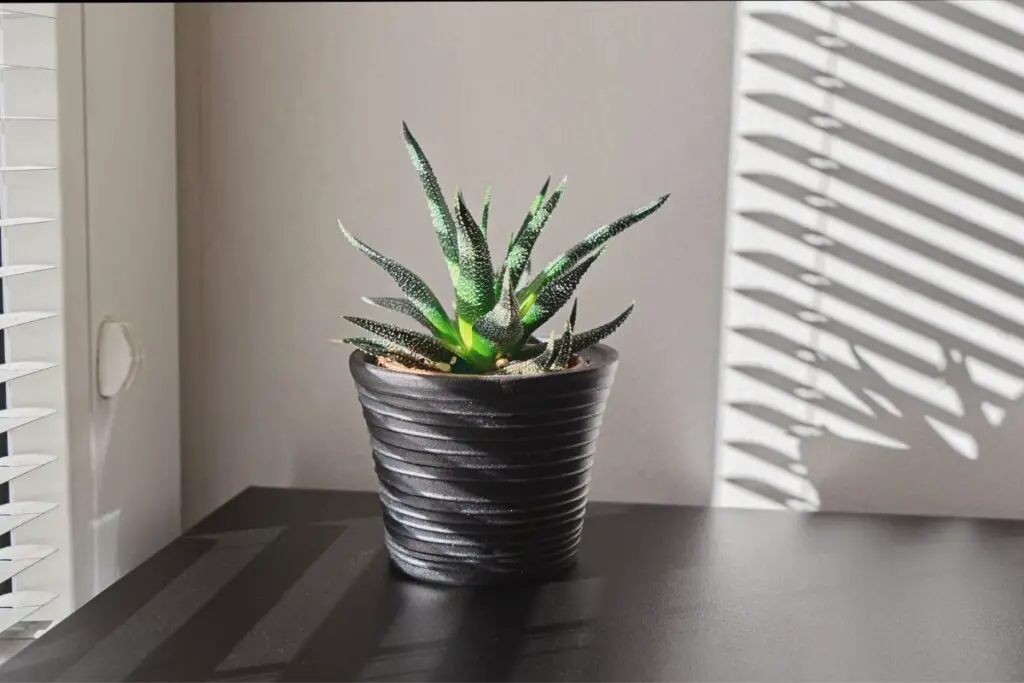
Importance of good light for Haworthia
All plants require sunlight to function and photosynthesize.
Generally, Haworthia grows best under indirect sunlight.
Some species can tolerate full sun, provided the intensity is not too harsh.
Adequate sunlight will help the plant photosynthesize and maintain the patterns and colors.
Most Haworthia varieties have long leaves with white stripes.
Due to this reason, Haworthia is also called a zebra plant.
They need adequate sunlight to maintain this rich color and pattern.
Though they will survive the full sun, keeping them under indirect sunlight is better.
It won’t affect their functioning or color. However, don’t deprive them of light.
Direct light vs. Indirect light
For a beginner, differentiating between direct and indirect sunlight can be challenging.
But you can understand the difference by using your hand.
Stretch your hand between your plant and the sunlight.
If the shadow is clear and sharp, it is direct sunlight. You will also feel the intense heat of sunlight.
On the other hand, the shadow of indirect sunlight will be soft and gentle.
The heat you will feel will be relatively less intense and bearable.
Try these two methods when choosing the planting site for these succulents.
You will be able to understand where to plant them.
Moreover, even if the sunlight becomes too intense for Haworthia, you can adjust it by placing shading nets to filter the sunlight.
What are the light requirements for Haworthia?
In this point, we will discuss three essential factors that you must consider to understand the light requirements of this succulent.
- Intensity
- Duration
- Quality
Let’s clearly understand how much light and how long Haworthia exactly needs.
This will help you draw a rough draft of the suitable location in your garden and how you can protect them.
Light intensity
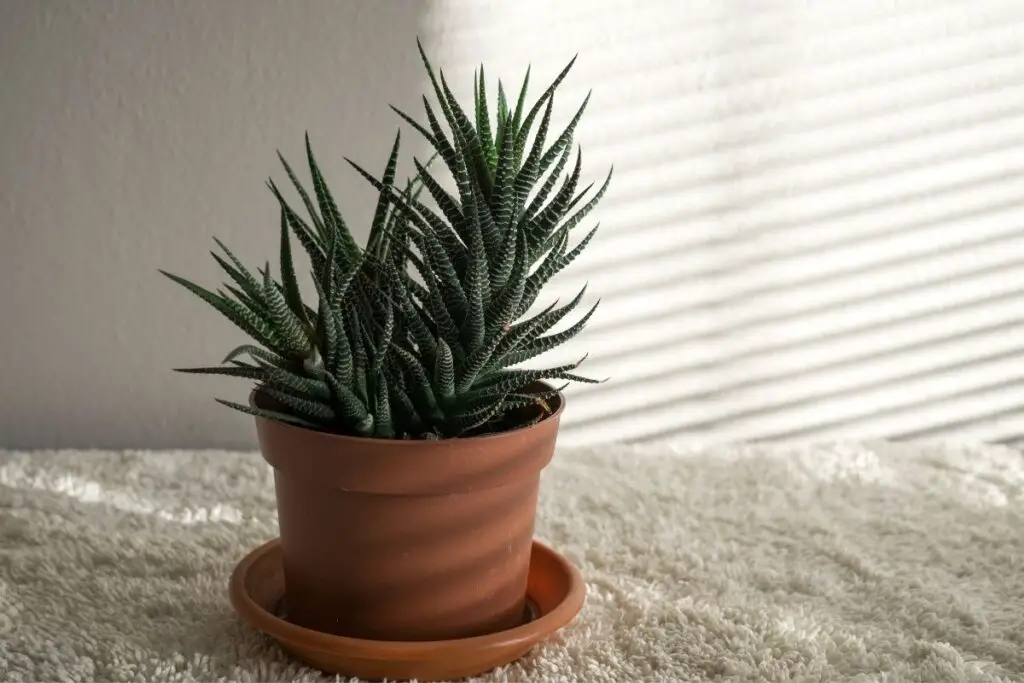
To produce energy for growth, Haworthia needs to photosynthesize.
For sufficient photosynthesis, Haworthia will need light.
The correct light intensity Haworthia can tolerate is approximately around 6,000 to 12,000 lux.
If the intensity increases more than the ideal range, the plant will have sunburn.
And if you neglect it, the plant will end up dying.
However, the intensity may differ and be higher for the matured plants and the varieties that bear rich colors and patterns.
Since they take time to adapt to intense light, you need to expose them gradually to bright light.
To estimate the exact intensity, you can use a measuring device to count the intensity level of the selected planting location.
I would like to share an approximate intensity level for Haworthia at different stages:
- For established or stressed plant: 5000 lux
- For a plant whose growth is in the process: 10,000 lux
- Generally preferred for all Haworthia: 15,000 lux
- For a well-established plant and robust plant: 20,000 lux
- For a large, matured plant with patterns that can handle full sun: 23,000 lux.
Light duration
Haworthia doesn’t need light for very long durations.
3-4 hours of bright, indirect sunlight is enough for Haworthias.
Do not expose them to direct sunlight as it can cause sunburn.
But outdoors, you cannot control the sunlight intensity or duration.
In such a case, fix an easily removable shading net.
Open it when the bright morning sun falls on the planting site and close when the intensity increases during the daytime.
In this way, your plant will get adequate light and get saved from direct sunlight.
During the winters, the intensity is relatively less compared to summers.
So, even if you don’t shade them, it won’t cause much harm.
However, you still need to keep a check. Put on the shade whenever necessary.
Looking for gardening supplies? We have tested 100's of products before recommending them to you guys. Check out our best pick below:
| Image | Gardening Supplies | Best Price? |
|---|---|---|
 Top
Top Top
Top | Raised Garden Bed Kit | Check On Amazon |
 | XLUX Soil Moisture Meter, Plant Water Monitor, Soil Hygrometer Sensor for Gardening, Farming, Indoor and Outdoor Plants, No Batteries Required | No Results |
 Top
Top Top
Top | 82 Pcs Garden Tools Set and Extra Succulent Tools Set | Check On Amazon |
 | Joeys Garden Expandable Garden Hose with 8 Function Hose Nozzle, Lightweight Anti-Kink Flexible Garden Hoses, Extra Strength Fabric with Double Latex Core, (50 FT, Black) | No Results |
 Top
Top Top
Top | Dual Chamber Compost Tumbler | Check On Amazon |
 Top
Top Top
Top | Sunnyglade Plant Stakes | Check On Amazon |
 Top
Top Top
Top | Organic Cold Pressed Neem Seed Oil | Check On Amazon |
 Top
Top Top
Top | Mighty Mint Gallon :-Insect and Pest Control Peppermint Oil | Check On Amazon |
 Top
Top Top
Top | Scotts DiseaseEx Lawn Fungicide | Check On Amazon |
 Top
Top Top
Top | Jacks Classic 20-20-20 All Purpose Fertilizer | Check On Amazon |
 Top
Top Top
Top | 30,000 Seeds Pollinator Attracting Wildflower Mixture | Check On Amazon |
 Top
Top Top
Top | Survival Vegetable Seeds Garden Kit-Over 16,000 Seeds | Check On Amazon |
Light quality
When we speak of quality, we mainly talk about the grow lights.
Haworthia will indeed grow under low light. But it shouldn’t be too low.
When sunlight outside is not enough for this succulent, you can fix grow lights.
You can use moderate to slightly high intense grow light.
A blend of warm and cool white bulbs will deliver adequate light intensity and balance in color.
T5 fluorescent lights would be suitable.
They will produce the same intensity needed by Haworthia.
Just make sure the lumens stay around 6k to 12k lux.
What happens if Haworthia receives too much sunlight?
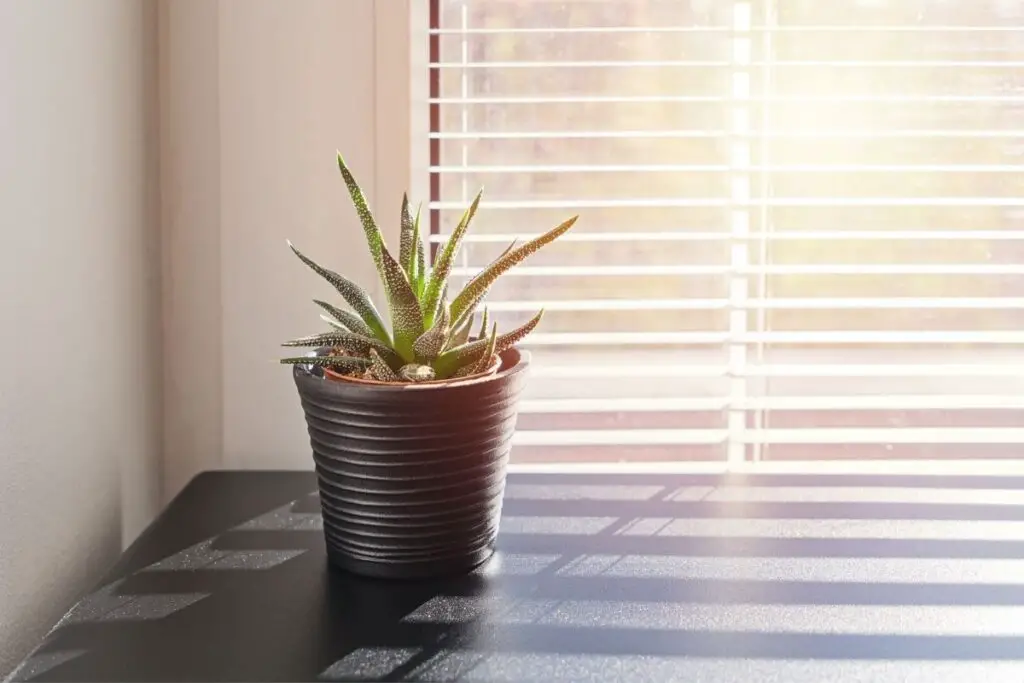
Haworthia can tolerate full sun to some extent.
But in the summer, when the temperature rises too high and the sunlight becomes too intense, it can affect the plant’s health.
In their native land, some grow under full sun, and some grow under shades of rocks and shrubs.
In whatever situation they are accustomed to growing, know that they will eventually need protection from the harsh direct sun rays.
Effects of excessive sunlight
- Yellow or white patches on the leaves.
- Sunburn. The leaves may have brown patches on the leaves.
- The leaves may also turn from green to dark red or black.
How to reduce light for Haworthia?
Put on a shading cloth or net to filter the sunlight, especially during the summers.
Whenever you select a position in your garden, check the intensity.
You can either do it independently by using your hand or use a measuring device.
You can select a spot with tall trees around. Those trees can filter the sunlight, and your Haworthia will receive perfect indirect sunlight.
What happens if Haworthia receives too little sunlight?
Indeed Haworthia can quickly adapt to indirect or low light conditions, but it should not be so low that your succulent ends up staying in darkness.
They grow best under indirect sunlight.
Signs your Haworthia is receiving too low sunlight:
- Elongated and stretchy plant
- Plant losing its color
How to improve the low light condition?
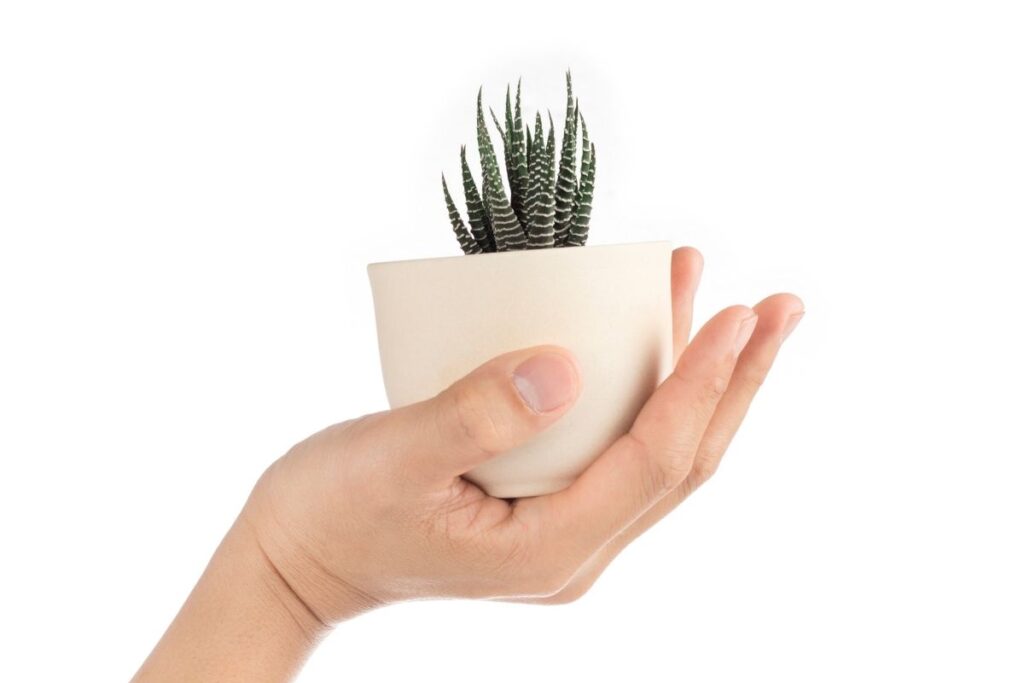
According to the plant’s need, you have to shift it to a location where light is indirect or direct but not too intense.
You can plant them in a sunny spot and fix a shading cloth.
But you don’t have to worry about sunburn.
You can fix grow lights in your garden bed.
Use a T5 florescent light or a light with a mixture of warm and cool white tones.
Make sure the intensity remains more or less the exact as the plant needs.
Light requirements – Summer vs. Winter
Haworthia will always do best under indirect sunlight.
Be it summer or winter, Haworthia will always need indirect light.
Summer light
As Haworthias are winter growers, they will rest in the summers.
But, because some Haworthias are desert plants, they will not completely go dormant.
Their growth pattern will slow down a lot.
In such conditions, you must prepare your plant.
When the temperature starts increasing after spring, shade the planting site.
When the summer arrives, the plant will get a signal that it will no longer receive its adequate light.
They will receive much higher than required.
So, they will slow down their growth.
Exposing them to full sun during this period will cause sunburn.
Winter light
Since Haworthias are winter growers, you don’t have to shade them.
Moreover, the level of sunlight intensity is relatively lower than in the summer.
So, if you let them have full sun, it won’t harm them.
You can remove the shade to let them enjoy the sunlight in winter.
Light requirements – Indoor vs. Outdoor
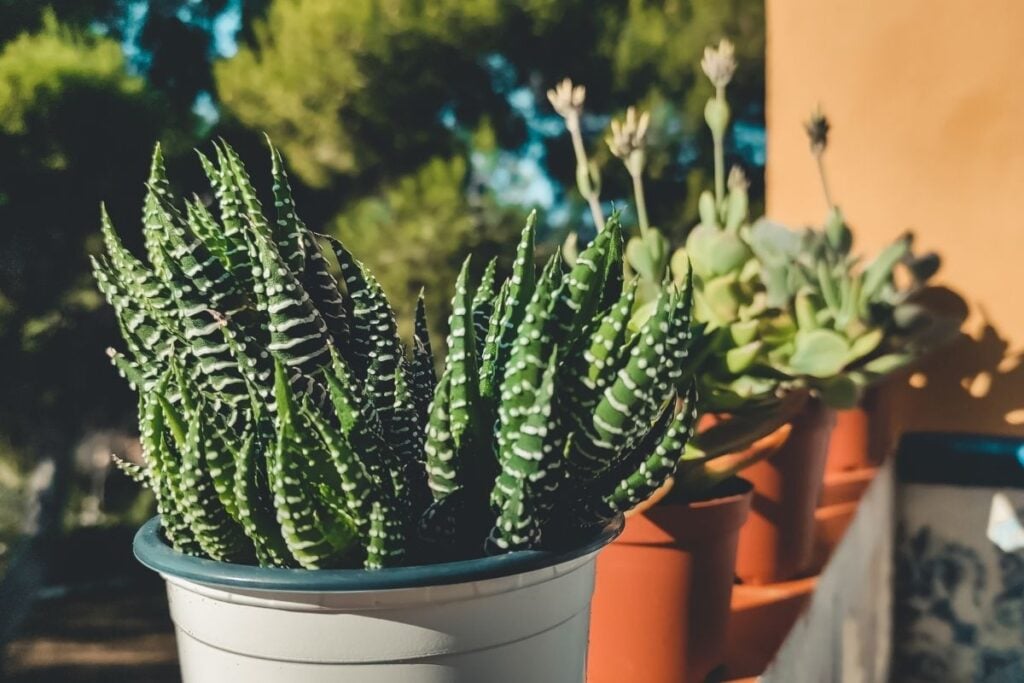
The light requirement is the same for both indoor and outdoor Haworthia.
They must receive bright indirect sunlight for promising growth and development.
Indoors
Haworthias can grow seamlessly under indirect sunlight, making them excellent indoor plants.
Indoors, you can easily let them have adequate sunlight because the sunlight intensity is relatively less harsh than outdoors.
They will not receive the harsh heat of the sun indoors.
For the matured Haworthias, try the southern or western windows.
If you feel the intensity is too much, put on curtains to filter the light.
In the winter, filtering is not required.
During the summers, you can try the east-facing windows.
This direction will give your plant the perfect morning sun.
However, the sunlight will last only for a few hours.
But that’s okay because Haworthia needs only 3 to 4 hours of the morning sun.
Outdoors
Outdoors, you cannot change the plant’s position like indoors.
Indoors, they grow in containers, and shifting is easy.
If you plant Haworthias directly in the ground, set your mind before planting them.
For dappled sunlight, try the eastern location in your garden.
They will receive bright indirect sunlight all day long.
But if you have already planted them in the western or southern directions, the plant might get sunburns.
In such a case, put on the shade.
If you grow them in containers, you will get the option of shifting them to other locations.
You can take Haworthias indoors during the hottest summers, but it is better not to change the environment drastically.
Since they have been growing in an outdoor environment, they won’t adapt to the indoor environment fast.
Final thoughts
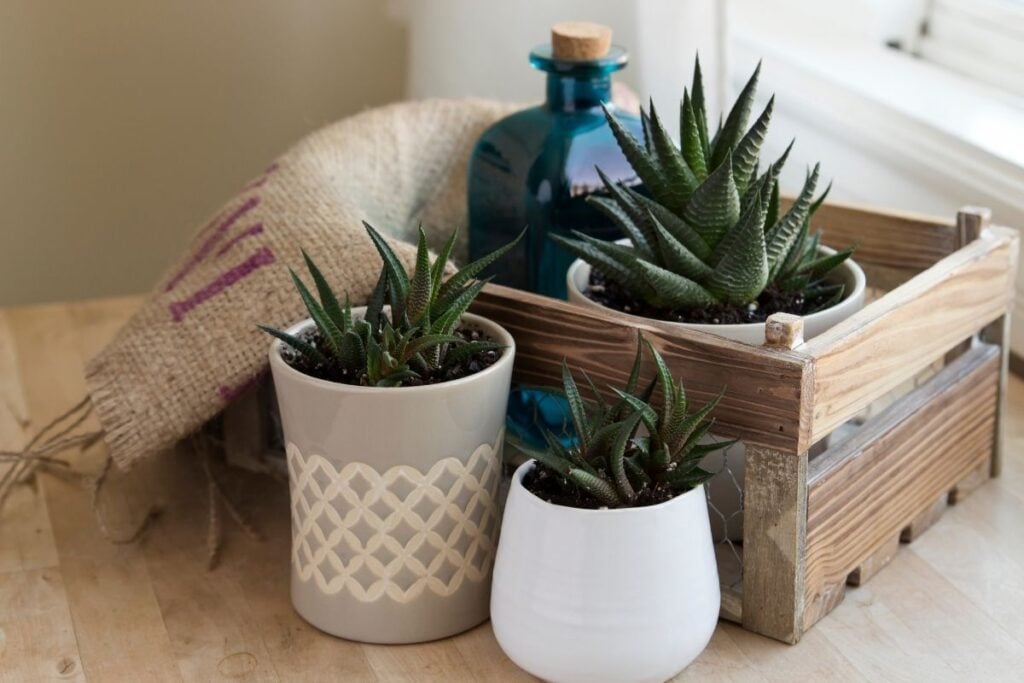
Though Haworthia can grow under full sun, you must shade them during too much intensity. It is better to plant Haworthias at a location that receives indirect sunlight.
Ensure the light intensity is the same as I mentioned before, i.e., between 5k and 12k. Other well-established and mature plants will need more lumens. So, plant your Haworthia accordingly.
Wherever you plant them, be it the southern, western, or eastern direction, outdoors or indoors, ensure they receive 3 to 4 hours of morning sun sunlight. For extreme low lights, use the grow lights.
FAQs
Can Haworthia grow in low lights?
Yes. Haworthia can easily grow in low lights. This feature makes them ideal houseplants.
But make sure that the light intensity doesn’t go below 5,000 lux.
Avoid putting them in a dark room. Otherwise, the plant will start having problems.
Can Haworthia grow indoors?
Yes, they can grow indoors because they can prosper in indoor light condition, which is neither too low nor too harsh.
It is perfect for Haworthias. It will save them from sunburn and help them maintain their leaf colors and patterns.
Reference: The Haworthia Society, Botanical Studies, University of Wisconsin-Madison, Sciencedirect, Researchgate, Haworthia Study.
